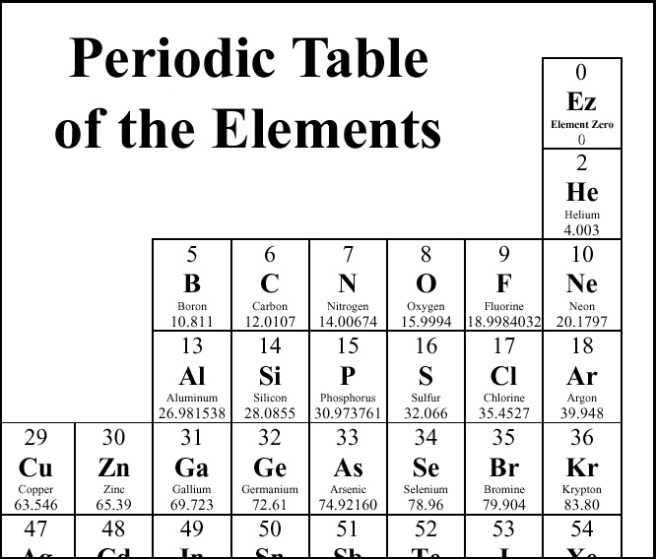This weekend, BioWare launched a copy of their new video game, Mass Effect 3, into space via weather balloon. Whoever found it when it landed, wherever it landed, could keep it. My friend Jim and I spent Saturday chasing this weather balloon, tracking its GPS signal, and were within 10 miles of its landing site when someone else claimed it.
 Fun publicity stunts aside, Mass Effect is a good game for those of us who enjoy the science part of science fiction. Much of the story revolves around the discovery of a new element on the periodic table, an element with an atomic number of zero. The strange qualities of “element zero” make all kinds of things possible, from artificial gravity to faster than light travel, as well as a few pretty cool guns.
Fun publicity stunts aside, Mass Effect is a good game for those of us who enjoy the science part of science fiction. Much of the story revolves around the discovery of a new element on the periodic table, an element with an atomic number of zero. The strange qualities of “element zero” make all kinds of things possible, from artificial gravity to faster than light travel, as well as a few pretty cool guns.
 Thing is, scientists once thought to include an element zero in the real periodic table. They called it neutronium. As you may remember from high school science, most atoms are made from protons, neutrons, and electrons, with the number of protons determining the atomic number. A neutronium atom has no protons; it is a single, free-floating neutron.
Thing is, scientists once thought to include an element zero in the real periodic table. They called it neutronium. As you may remember from high school science, most atoms are made from protons, neutrons, and electrons, with the number of protons determining the atomic number. A neutronium atom has no protons; it is a single, free-floating neutron.
Scientists today don’t generally consider free-floating neutrons to be atoms in their own right, and so neutronium is not listed in the periodic table. However, the term has been used in science fiction many times, usually to refer to incredibly strong substances produced in the heart of neutron stars.
Obviously, Mass Effect’s element zero is different than neutronium (unless you want to consider neutronium an element zero isotope). But if a massless, atomic numberless element really did exist, it would definitely have some strange properties. Maybe even the properties predicted by the game.
hi. really enjoyed your article on the topic! but actually such an element wouldn’t be massless as both protons AND neutrons count into its mass number. so it would have Z=0 but A=1
LikeLiked by 1 person
You are quite right. Neutronium–though not considered an element–does have mass, so it’s not the same as the Element Zero in the game. Perhaps they’re isotopes of each other!
LikeLike
Does Mass Effect really state that its Eezo is massless? I couldn’t find that either in the Codex nor the MassEffectWiki. I like your idea of it beeing a Neutronium isotope but for it to be massless it would need to have 0 (zero) neutrons as well .. so what would be left at all?! it’s quiet intriguing 🙂
LikeLike
I may have gotten that from one of the books. To be honest, I don’t remember. Maybe they’re trying to be deliberately vague about the mass of element zero.
Regardless, ordinary neutronium is unstable (it has a half-life of 11 minutes as I recall), and it doesn’t have any of the properties element zero supposedly has. But you’re right, if eezo is an isotope with no neutrons (and no protons) than you’re left with…nothing.
Perhaps there’s a third particle in the atomic nucleus that our current science is unaware of, and when that particle is left by itself it remains stable.
LikeLike
the mass of Eezo is “no value” by its nature it manipulates mass and, hence allowing FTL travel. so technically it would have different mass depending on electrical flow through the element
LikeLike
Due to a ridiculous number of spam comments left on this post, I’ve had to clear out most of the comments here and block any future comments. If you left a legit comment and it got deleted by accident, I apologize.
LikeLike